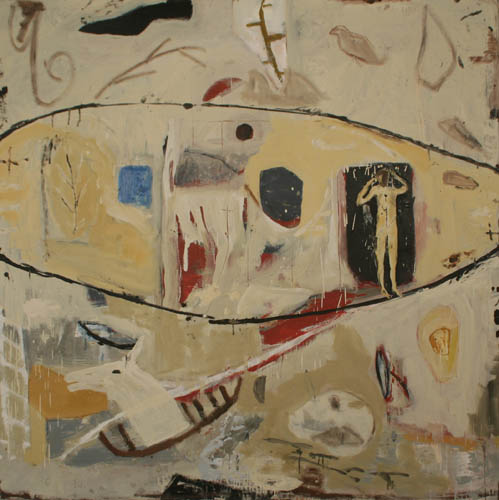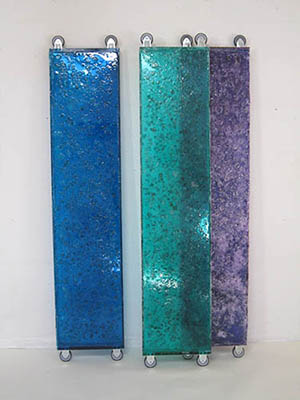
Alban Allegro
Colomba Amstutz
Colomba Amstutz and Alban Allegro
Since their chance encounter in Florence where they received their art training, Colomba Amstutz and Alban Allegro have recognised a thematic and formal closeness in their work which has joined them together both in life and in the studio. Like two sides of the same mirror, their paintings speak to each other in a rich dialogue meeting at several levels while remaining unique and identifiable, independent yet linked to each other. The exhibition offers an independent space to each of the two artists while underlining the many bonds which have been forged over their already long careers as artists.
Symbolic and sometimes enigmatic, Alban Allegro’s pictorial language guides the onlooker across a space-time universe close to myth, calm but powerful, which seems to draw its power from the depths of the human soul and the earth. His medium- and large-format works can be interpreted as reflections from the depths of Plato’s cave, snatches of the verities which touch the most profound human awareness and existence, those of birth, life and death. He borrows formal ancestral signs such as the boat, the cross, the deer, the eye as though he is anchoring himself in the flow which rises from origins, while changing them into a contemporary vision, perhaps to remind us that the fundamental dilemmas remain the same and that there is no real answer.
The medium and colours of painting are a major concern of the artist which he expresses by a voluptuous multiplication of layers to achieve compositions in which the various figures sink into unknown depths and reappear as insubstantial shadows echoing their suffering and fragility.
Although the work of Colomba Amstutz offers a more unambiguous treatment of her subjects, it is no less powerful. We find silhouettes of humans floating in a primordial aerial or aquatic environment. As in a dream which exists before birth or which invades consciousness after death, these ethereal beings tell of the cycle of life, the creation and renewal of the world. According to their different stances, the figures are both parts of the structure of the painting and keys to interpretation of the symbols. Standing, lying, crouching they speak of relationships, stages of life, rebirth and death. The space in which they seem to float, suggested by overlying transparent layers and by the juxtaposition of colours, does not refer to reality but rather to the passage of time, the idea we construct about history, legend, myth. The choice of language, close to stylisation, transforms each element into a symbol whose significance must be translated from one work to another like clues left by the artist.



